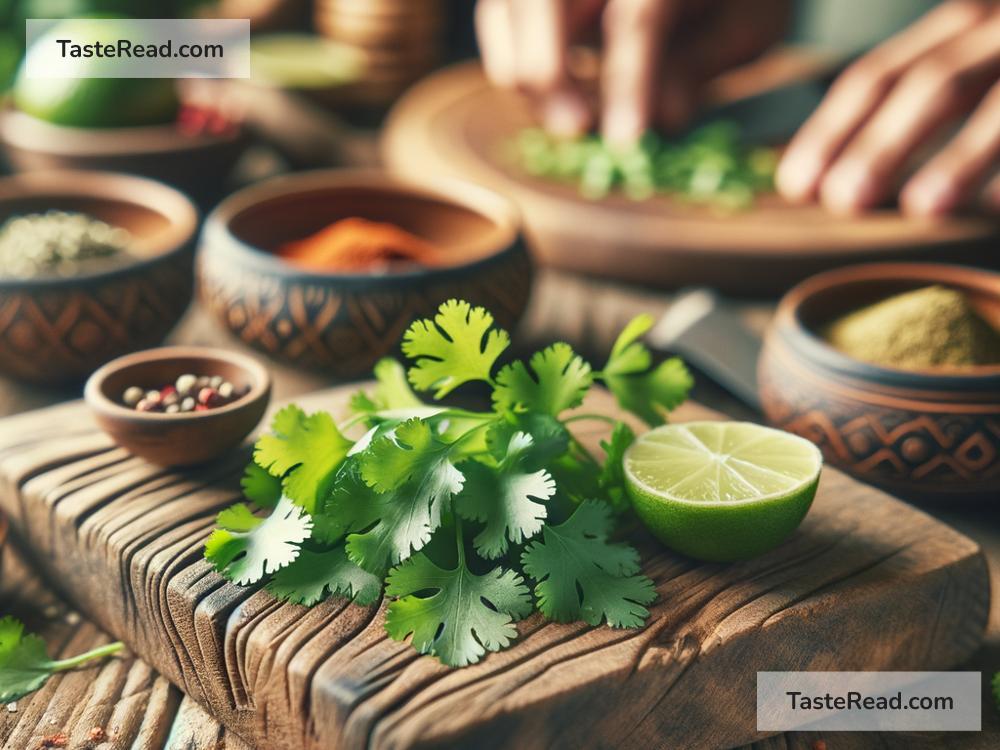Why Cilantro Is Loved by Some and Disliked by Others
Have you ever eaten a meal full of delicious flavors, but then noticed something sharp and distinctive on your tongue—something that tasted fresh and citrusy, or maybe even like soap? If so, you might have come face-to-face with cilantro, the small, leafy herb that sparks debate every time it’s added to a dish. For centuries, cilantro has been a staple ingredient used in cuisines around the world, but it has also divided people. Some love its bright, fresh taste, while others can’t stand it. But why is cilantro so polarizing? Let’s dive into this fascinating topic!
What Is Cilantro?
First, let’s talk about what cilantro is. Cilantro is a leafy green herb, also known as coriander leaves in some parts of the world. The plant, Coriandrum sativum, produces not only cilantro leaves, but also coriander seeds, which are used as a spice. Despite being part of the same plant, cilantro leaves and coriander seeds have very different flavors. Cilantro is widely used in Asian, Indian, Mexican, Middle Eastern, and South American cuisines to enhance dishes with its fragrant and slightly citrusy taste.
While many enjoy cilantro in salsas, curries, salads, tacos, and more, there’s a surprising number of people who would prefer their food without it altogether. For some, cilantro makes the dish come alive. For others, it ruins the meal. So, why is cilantro such a love-it-or-hate-it herb?
The Role of Genetics
The most commonly cited explanation for why cilantro tastes different to different people is genetics. Scientists have found that our DNA can influence how we perceive the taste of cilantro. Specifically, variations in a gene called OR6A2 play a role. This gene affects how certain chemicals in cilantro are perceived by our noses and taste buds.
Cilantro contains compounds known as aldehydes, which give it its distinct fresh and citrusy flavor. However, some aldehydes are also found in soaps and cleaning products! If you have a specific variation of the OR6A2 gene, your brain might connect the two scents—and cilantro could taste soapy or unpleasant to you.
For those without this genetic sensitivity, the aldehydes in cilantro don’t trigger the “soap reaction.” Instead, they experience its bright and zesty flavor, which adds depth and complexity to dishes.
Personal Experience and Familiarity
Genetics might explain part of the cilantro mystery, but it’s not the whole story. Our personal experiences with food also play a big role in whether we like or dislike cilantro. For example, people who are exposed to cilantro early in life, whether through family cooking or cultural dishes, are often more likely to enjoy it. The flavors and scents of childhood meals can shape how we perceive food later in life.
On the other hand, if a person first encounters cilantro in a dish where it isn’t balanced properly—maybe it’s too overwhelming or offset by other strong flavors—they might develop a dislike for it. Sometimes, one bad experience with cilantro can stick with you for years.
The Psychology of Taste
Taste is closely tied to psychology. Studies show that food preferences are influenced by cultural norms, memories, and emotional associations. In countries where cilantro is a staple ingredient, like Mexico or India, people are more likely to love it because it’s a familiar flavor. Cilantro is often associated with home-cooked meals, celebrations, and traditional recipes, which makes people feel good about eating it.
But in places where cilantro isn’t commonly used, the strong, unique flavor might come as a surprise to the palate. If people associate it with an unpleasant experience or foreign taste, their brain can reinforce that dislike over time. This combination of psychology and genetics helps explain why cilantro sparks such strong reactions—positive or negative.
Can You Learn to Like Cilantro?
Fortunately, if you dislike cilantro, all hope is not lost. Some scientists and chefs believe that people can gradually train their taste buds to accept its flavor. Repeated exposure to cilantro, especially in well-balanced dishes, might help your brain stop associating it with soap and start connecting it with enjoyable flavors. For example, you could try adding small amounts of cilantro to dishes like guacamole, rice, or soups, mixing it in with other strong flavors.
Alternatively, you can substitute other herbs like parsley, mint, or basil when recipes call for cilantro. While these substitutes won’t taste exactly the same, they can add a fresh, herbal note to your dish without the polarizing reaction.
Conclusion: A Matter of Taste
At the end of the day, cilantro is one of those foods that reminds us just how unique human taste buds are. Whether you love it or hate it, there’s no denying that cilantro has made a name for itself in the culinary world. For some, its bright and refreshing flavor is a perfect addition to a variety of dishes. For others, its soapy taste is something they’d rather avoid.
Whatever your stance on cilantro, it’s fascinating to see how genetics, psychology, and culture all come together to shape our food preferences. The next time you find yourself debating cilantro’s merits over dinner, remember—it’s not just a matter of taste; it’s science, too!


